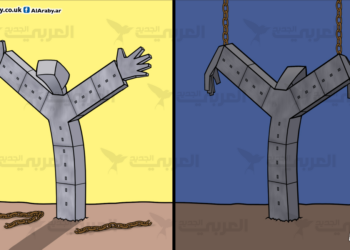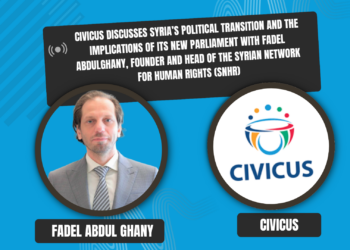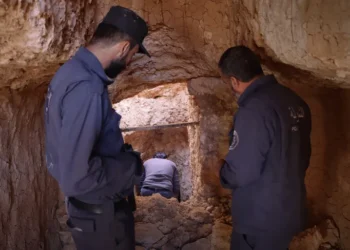Fadel Abdulghany
The relationship between transitional justice and civil peace represents one of the most complex post-conflict challenges, particularly in contexts where demands for accountability intersect with the imperatives of stability and social reconstruction. In the Syrian case, after more than 14 years of conflict marked by systematic violations and societal fragmentation, this intersection takes on particular importance.
Transitional justice is a set of processes and mechanisms through which societies address the legacy of widespread violations, while civil peace is understood as a state of harmony and cooperation that goes beyond the mere absence of violence. This dual framework reveals deep complementarities and inherent tensions.
This article seeks to analyze how these two conceptual systems intersect, combine, and sometimes diverge in the Syrian transitional landscape, exploring the theoretical foundations that govern their synergy while also recognizing the challenges that arise when the imperatives of justice and peacebuilding meet.
Areas of Convergence and Temporal Integration
The conceptual framework of transitional justice encompasses multiple, interconnected mechanisms for collectively addressing past violations and establishing the foundations for future coexistence. These mechanisms include: criminal prosecutions as a traditional tool for accountability; truth commissions that build shared narratives about historical violations; reparations programs that acknowledge victims’ suffering; and institutional reforms that transform the structures that enabled systematic violations.
Each mechanism operates within distinct timeframes and procedures, but they complement each other within a comprehensive approach to societal transformation. Last April, the Syrian Network for Human Rights formulated a comprehensive vision for the transitional justice process in Syria, with detailed roadmaps that emphasize the interconnectedness of these mechanisms.
In contrast, the concept of civil peace goes beyond the cessation of hostilities to a multidimensional approach that operates at the individual, community, and national levels.
At the individual level, civil peace is manifested in processes of psychological recovery and reintegration; at the societal level, it manifests in rebuilding trust and repairing the torn social fabric; and at the national level, it requires reestablishing the social contract between citizens and state institutions.
This broad conception emphasizes long-term stability, where violence becomes unimaginable, not merely repressed.
The convergence between the two frameworks is evident through multiple theoretical intersections; both approaches aim to transform situations of violence to sustainable coexistence, and they share the goals of preventing violence, promoting reconciliation, and establishing peace.
Temporal complementarity emerges as a crucial factor: transitional justice addresses historical grievances, while civil peace mechanisms focus on building future relationships. This temporal synergy allows societies to address past violations while simultaneously building the capacity to manage conflicts peacefully.
Institutional and procedural synergies further enhance this convergence through a shared focus on civil society participation, local ownership, and inclusive processes; research points to seven key civil society functions that deeply overlap with transitional justice goals: protection, monitoring, advocacy, socialization, social cohesion, facilitation, and service delivery.
These functional overlaps create natural points of integration where civil peace initiatives and transitional justice mechanisms complement and reinforce each other.
Moreover, both frameworks recognize that structural transformation is a condition for sustainable peace. Civil peace initiatives focus on preventing violence through long-term capacity building and gradual social transformation, while transitional justice mechanisms, particularly institutional reform, aim to change the conditions that allowed past violations to occur.
This shared focus on addressing root causes rather than simply treating symptoms leads to a fundamental compatibility between the two approaches, making their integration not only a practical necessity but also a theoretical coherence.
Dismantling the “Peace vs. Justice” Binary
Despite the commonalities between transitional justice and civil peace, the relationship between them reveals theoretical and practical tensions that require careful examination. This tension is most evident in what researchers call the “peace vs. justice dilemma,” where demands for accountability and prosecution may appear to conflict with the urgent imperatives of stability.
This tension creates challenges in public decision-making, as authorities must balance the urgent imperatives of peace with the demands of justice, often leading to perceived contradictions between the two goals.
Temporal and procedural complexities exacerbate this tension. Transitional justice mechanisms, particularly criminal prosecutions, typically require lengthy investigation and adjudication periods, while civil peace initiatives prioritize measures that produce immediate stability.
These time differences may lead to tangible procedural contradictions: rapid stabilization measures may undermine systemic justice dynamics, while lengthy judicial processes may be seen as destabilizing fragile peace arrangements.
However, contemporary literature undermines this dualistic perspective, deeming it a false dichotomy. It assumes that ignoring mass crimes, failing to address the root causes of conflict, and neglecting victims’ demands for justice keeps the risk of renewed violence high. Accordingly, peace and justice are understood as complementary, not competing, goals, each reinforcing the sustainability of the other and strengthening its outcomes.
Civil society emerges as an important mediating actor between these two frameworks. Its organizations play multiple roles, including protecting populations, monitoring violations, and facilitating dialogue at various levels.
These mediating functions help bridge the gaps between formal justice mechanisms and community-based peace initiatives, creating spaces where both goals can be pursued simultaneously without mutual undermining.
National context and cultural sensitivity are key success factors. Both frameworks emphasize local ownership and adaptation to social specificities, while maintaining universal references to peace and justice.
This shared focus on “localization” provides a structural basis for integration, ensuring that solutions are tailored to specific contexts while preserving general principles.
The Syrian context, in particular, highlights the challenges of this integration. Institutional fragmentation, manifested in the multiplicity of committees concerned with various aspects of the issues without clear coordination frameworks, risks conflicting mandates and duplicating efforts.
The overlap of civil peace initiatives with judicial fields, as seen in some of the practices of the Civil Peace Committee on the Syrian Coast, also reveals how a misunderstanding of the complementary nature of these two frameworks can undermine the goals of both justice and peace.
When civil peace committees go beyond their facilitative roles to exercise powers of a judicial nature without legal basis, they undermine the principle of separation of powers and undermine the societal trust necessary for accountability and reconciliation.
Conclusion: Integration as a Necessity for Reconstruction
A theoretical examination of civil peace and transitional justice reveals that, rather than representing competing models, these two concepts embody complementary dimensions of post-conflict recovery that require careful coordination to achieve sustainable transformation.
The Syrian case demonstrates that pursuing civil peace without addressing justice requirements, or advancing accountability without considering the implications of stability, risks undermining both goals.
The identified areas of convergence (shared transformation goals, temporal complementarity, institutional synergies, and structural focus) provide a theoretical basis for integrative approaches that recognize justice and peace as mutually reinforcing, not mutually exclusive.
The emerging tensions between these two frameworks, particularly the perceived “peace versus justice dilemma,” reflect less a contradiction than implementation challenges that require advanced approaches that take into account the legitimate concerns of both processes.
Transcending false dichotomies requires recognizing that sustainable peace is not built on unaddressed injustice, and that true justice cannot be achieved in contexts of chronic instability.
In this context, civil society plays a crucial mediating role, along with emphasizing local ownership and cultural adaptation, providing practical ways to constructively address these tensions.
For the transitional process in Syria to succeed, theoretical visions must inspire practical approaches that maintain clear institutional boundaries while ensuring coordination, respect the independence of the judiciary while facilitating community dialogue, and address past violations while building capacity for future coexistence.
Therefore, integrating civil peace and transitional justice is a practical necessity for societies seeking to transform the legacy of violence into foundations for lasting peace.
This integration requires a thorough understanding of the contributions, limitations, and interconnectedness of each framework, while recognizing that neither framework alone is sufficient to undertake the complex task of rebuilding Syrian society after the conflict.






